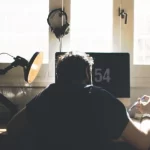- By waris khan
- 10 Jan, 2025
- Digital Marketing
“Google Friendly” Solutions to Graphic-Intense Sites
1. Adding Visible Text Around Graphics:
- Above or Below Graphics: The best approach is to add text around the images, such as a paragraph above and/or below the graphics. This gives search engines content to crawl and helps establish the relevance of the page to the keyword.
- Heading Tags: If adding full paragraphs is difficult, using heading tags with keyword phrases followed by brief descriptions is a helpful alternative.
2. Be Creative with Text on the Page:
- Descriptive Text: Adding short descriptions or captions under each graphic or next to the images is an excellent way to introduce relevant text.
- Additional Elements: Including things like tips, more info boxes, or customer testimonials can provide valuable content to the page, improving its SEO potential.
3. Create Text-Based Interior Pages:
- Link to Graphic Pages: If the graphic-heavy pages cannot be modified, creating interior text-based pages related to the images can provide a pathway for search engines to crawl the site. These text pages should link to the graphic-heavy pages using anchor text with your targeted keywords.
- Avoid Redirects: It’s best to avoid redirects between pages. Instead, focus on creating direct text links to your graphic pages to maximize the benefit of using keyword-rich anchor text.
4. Focus on Building Link Popularity:
- Off-Page SEO: If modifying the content of the graphic-heavy pages isn’t feasible, building link popularity is crucial. Gaining backlinks from authoritative sites in your niche, with anchor text that includes your target keyword, can boost your search engine rankings even without adding text to the pages themselves.
- Quality Over Quantity: It’s more valuable to have a few high-quality, authoritative backlinks with keyword-rich anchor text than many backlinks with irrelevant or non-specific anchor text.
In Conclusion:
- While adding text to graphic-heavy pages is the most direct way to improve SEO, there are alternative strategies to achieve strong rankings without drastically altering the design of the site. These include adding creative text-based elements around the graphics, creating related interior pages with keyword-focused text, and building a strong backlink profile from authoritative sources. By combining these strategies, website owners can adhere to Google’s guidelines while improving their chances of ranking well for their target keywords.
This approach ensures that search engines can understand the content of the page, while also keeping the user experience intact, especially for sites where the visual presentation is a key part of the user engagement.












